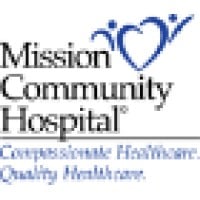
Mission Community Hospital Company Cyber Security Posture
mchonline.orgMission Community Hospital (MCH) is a safety-net, nonprofit community hospital, providing a full range of medical, surgical, psychiatric and 24/7 emergency room care. Of the 1.8 million people who reside in the San Fernando Valley (CA), nearly half have no health insurance. MCH ensures that people receive quality healthcare compassionately regardless of their ability to pay. The work we do is not merely meaningful, but critical. MCH is the oldest hospital in the San Fernando Valley. We opened in 1923. In 2003, we reopened the newly built 145-bed facility located on Roscoe. We operate an Acute Care and Behavioral Health services through the 60-bed Inpatient unit, which is one of the largest in Los Angeles.
MCH Company Details
mission-community-hospital
479 employees
1726
62
Hospitals and Health Care
mchonline.org
Scan still pending
MIS_1999848
In-progress
Between 800 and 900
This score is AI-generated and less favored by cyber insurers, who prefer the TPRM score.
 MCH Global Score
MCH Global Score.png)

Mission Community Hospital Company Scoring based on AI Models
| Model Name | Date | Description | Current Score Difference | Score |
|---|---|---|---|---|
| AVERAGE-Industry | 03-12-2025 | This score represents the average cybersecurity rating of companies already scanned within the same industry. It provides a benchmark to compare an individual company's security posture against its industry peers. | N/A | Between 800 and 900 |
Mission Community Hospital Company Cyber Security News & History
| Entity | Type | Severity | Impact | Seen | Url ID | Details | View |
|---|---|---|---|---|---|---|---|
| Mission Community Hospital | Data Leak | 85 | 3 | 06/2023 | MIS144625623 | Link | |
Rankiteo Explanation : Attack with significant impact with internal employee data leaksDescription: Mission Community Hospital in California continues to investigate a cyberattack. The RansomHouse advertisement for Mission Community Hospital stated that it had 2.5 TB of data and included some supporting documentation. Following further analysis, they came to the conclusion that the threat actor had exploited vulnerabilities in both the network and VMware environments to get access to the hospital infrastructure and have an impact on vital systems. They list a number of folders that contain both current files and files from previous years that contain patient data as part of their leak. | |||||||
| Mission Community Hospital | Ransomware | 100 | 5 | 05/2023 | MIS2394623 | Link | |
Rankiteo Explanation : Attack threatening the organization’s existenceDescription: California's Mission Community Hospital said that they may have been the target of a ransomware assault that exposed their personal data. Threat actors from RansomHouse took ownership of the attack and proved it with a number of data. Apparently, they downloaded 2.5 TB of data. RansomHouse appears to have accessed the imaging system and picture files, along with employee-related files and some financial reports and files, according to the evidence files. The earlier backup files were the only patient references in the proof files. It is unclear if they were able to access the EMR system or any recent patient data. | |||||||
Mission Community Hospital Company Subsidiaries

Mission Community Hospital (MCH) is a safety-net, nonprofit community hospital, providing a full range of medical, surgical, psychiatric and 24/7 emergency room care. Of the 1.8 million people who reside in the San Fernando Valley (CA), nearly half have no health insurance. MCH ensures that people receive quality healthcare compassionately regardless of their ability to pay. The work we do is not merely meaningful, but critical. MCH is the oldest hospital in the San Fernando Valley. We opened in 1923. In 2003, we reopened the newly built 145-bed facility located on Roscoe. We operate an Acute Care and Behavioral Health services through the 60-bed Inpatient unit, which is one of the largest in Los Angeles.
Access Data Using Our API

Get company history
.png)
MCH Cyber Security News
Mission, Texas, requested state of emergency after cyberattack. Some analysts aren't so sure
Some analysts said they're unsure if the cyberattack the City of Mission, Texas, sustained rises to the level of "emergency."
A Look at 2024’s Health Care Cybersecurity Challenges | AHA News
With 386 health care cyber-attacks reported thus far in 2024, data-theft crimes and ransomware attacks against health care and our ...
Department of Public Health
High-quality healthcare for Medi-Cal and uninsured with 14 medical clinics, 55 community partners and 2 hospitals: ZSFG and Laguna Honda.
Remarks at a UN Security Council Briefing on Ransomware Attacks against Hospitals and Other Healthcare Facilities and Services
The U.S. government is aware of over 1,500 ransomware-related incidents in 2023 alone, generating over $1.1 billion in [ransomware] payments.
Health
The health sector has been increasingly targeted following the Covid-19 pandemic which made the it even more vulnerable to cyberattacks as EU citizens had ...
Asheville's Mission Hospital is in the center of Hurricane Helene disaster recovery
The hospital was prepared for Hurricane Helene and has maintained operations, despite being in the epicenter of destruction.
Mission Community Hospital Data Breach
Mission Community Hospital recently notified individuals about a data security incident that occurred on May 1, 2023. The hospital discovered potential ...
Mission Community Hospital Notifies Patients of Recent Data Breach Involving Their Social Security Numbers
On November 21, 2023, Mission Community Hospital sent out data breach letters to anyone who was affected by the recent data security incident.
Tech outage fallout: Hospitals need strong response plans when systems go down
The worldwide computer outages that affected hospitals this month illustrated how vulnerable health systems are in a connected world.

MCH Similar Companies
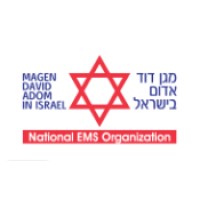
Magen David Adom in Israel
Magen David Adom (MDA) is Israel’s only national EMS and blood services organization. MDA is responsible for teaching first aid and emergency medicine and professional services, blood services, and engages in humanitarian activities for the community. MDA operates 1,200 emergency vehicles and two

Piedmont
At Piedmont, we deliver healthcare marked by compassion and sustainable excellence in a progressive environment, guided by physicians, delivered by exceptional professionals and inspired by the communities we serve. Piedmont is a not-for-profit, community health system comprised of 25 hospitals and
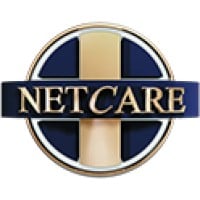
Netcare
The Netcare Group (JSE: NTC) offers a unique, comprehensive range of medical services across the healthcare spectrum, enabling us to serve the health and care needs of each individual who entrust their care to us. Our focus on implementing sophisticated digital systems will enable us to provide care
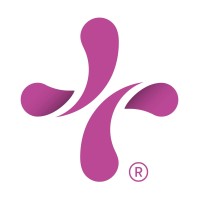
CommonSpirit Health
Two legacies of caring. One ministry of change. CommonSpirit Health is a non-profit, Catholic health system dedicated to advancing health for all people. With approximately 175,000 employees and 25,000 physicians and advanced practice clinicians, CommonSpirit operates 140 hospitals and more than 2,2
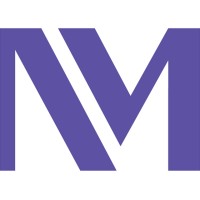
Northwestern Medicine
Northwestern Medicine is the collaboration between Northwestern Memorial HealthCare and Northwestern University Feinberg School of Medicine around a strategic vision to transform the future of healthcare. It encompasses the research, teaching, and patient care activities of the academic medical cent

Cencora
Cencora, a company building on the legacy of AmerisourceBergen, is a leading global pharmaceutical solutions organization centered on improving the lives of people and animals around the world. We connect manufacturers, providers, and patients to ensure that anyone can get the therapies they need, w

Frequently Asked Questions (FAQ) on Cybersecurity Incidents
MCH CyberSecurity History Information
Total Incidents: According to Rankiteo, MCH has faced 2 incidents in the past.
Incident Types: The types of cybersecurity incidents that have occurred include ['Ransomware', 'Data Leak'].
Total Financial Loss: The total financial loss from these incidents is estimated to be {total_financial_loss}.
Cybersecurity Posture: The company's overall cybersecurity posture is described as Mission Community Hospital (MCH) is a safety-net, nonprofit community hospital, providing a full range of medical, surgical, psychiatric and 24/7 emergency room care. Of the 1.8 million people who reside in the San Fernando Valley (CA), nearly half have no health insurance. MCH ensures that people receive quality healthcare compassionately regardless of their ability to pay. The work we do is not merely meaningful, but critical. MCH is the oldest hospital in the San Fernando Valley. We opened in 1923. In 2003, we reopened the newly built 145-bed facility located on Roscoe. We operate an Acute Care and Behavioral Health services through the 60-bed Inpatient unit, which is one of the largest in Los Angeles..
Detection and Response: The company detects and responds to cybersecurity incidents through {description_of_detection_and_response_process}.
Incident Details
Incident 1: Ransomware Attack
Title: {Incident_Title}
Description: {Brief_description_of_the_incident}
Date Detected: {Detection_Date}
Date Publicly Disclosed: {Disclosure_Date}
Date Resolved: {Resolution_Date}
Type: {Type_of_Attack}
Attack Vector: {Attack_Vector}
Vulnerability Exploited: {Vulnerability}
Threat Actor: {Threat_Actor}
Motivation: {Motivation}
Incident 2: Data Breach
Title: {Incident_Title}
Description: {Brief_description_of_the_incident}
Date Detected: {Detection_Date}
Date Publicly Disclosed: {Disclosure_Date}
Date Resolved: {Resolution_Date}
Type: {Type_of_Attack}
Attack Vector: {Attack_Vector}
Vulnerability Exploited: {Vulnerability}
Threat Actor: {Threat_Actor}
Motivation: {Motivation}
Common Attack Types: As of now, the company has not encountered any reported incidents involving common cyberattacks.
Identification of Attack Vectors: The company identifies the attack vectors used in incidents through {description_of_identification_process}.
Impact of the Incidents
Incident 1: Ransomware Attack
Financial Loss: {Financial_Loss}
Data Compromised: {Data_Compromised}
Systems Affected: {Systems_Affected}
Downtime: {Downtime}
Operational Impact: {Operational_Impact}
Conversion Rate Impact: {Conversion_Rate_Impact}
Revenue Loss: {Revenue_Loss}
Customer Complaints: {Customer_Complaints}
Brand Reputation Impact: {Brand_Reputation_Impact}
Legal Liabilities: {Legal_Liabilities}
Identity Theft Risk: {Identity_Theft_Risk}
Payment Information Risk: {Payment_Information_Risk}
Incident 2: Data Breach
Financial Loss: {Financial_Loss}
Data Compromised: {Data_Compromised}
Systems Affected: {Systems_Affected}
Downtime: {Downtime}
Operational Impact: {Operational_Impact}
Conversion Rate Impact: {Conversion_Rate_Impact}
Revenue Loss: {Revenue_Loss}
Customer Complaints: {Customer_Complaints}
Brand Reputation Impact: {Brand_Reputation_Impact}
Legal Liabilities: {Legal_Liabilities}
Identity Theft Risk: {Identity_Theft_Risk}
Payment Information Risk: {Payment_Information_Risk}
Average Financial Loss: The average financial loss per incident is {average_financial_loss}.
Commonly Compromised Data Types: The types of data most commonly compromised in incidents are {list_of_commonly_compromised_data_types}.
Incident 1: Ransomware Attack
Entity Name: {Entity_Name}
Entity Type: {Entity_Type}
Industry: {Industry}
Location: {Location}
Size: {Size}
Customers Affected: {Customers_Affected}
Incident 2: Data Breach
Entity Name: {Entity_Name}
Entity Type: {Entity_Type}
Industry: {Industry}
Location: {Location}
Size: {Size}
Customers Affected: {Customers_Affected}
Response to the Incidents
Incident 1: Ransomware Attack
Incident Response Plan Activated: {Yes/No}
Third Party Assistance: {Yes/No}
Law Enforcement Notified: {Yes/No}
Containment Measures: {Containment_Measures}
Remediation Measures: {Remediation_Measures}
Recovery Measures: {Recovery_Measures}
Communication Strategy: {Communication_Strategy}
Adaptive Behavioral WAF: {Adaptive_Behavioral_WAF}
On-Demand Scrubbing Services: {On_Demand_Scrubbing_Services}
Network Segmentation: {Network_Segmentation}
Enhanced Monitoring: {Enhanced_Monitoring}
Incident 2: Data Breach
Incident Response Plan Activated: {Yes/No}
Third Party Assistance: {Yes/No}
Law Enforcement Notified: {Yes/No}
Containment Measures: {Containment_Measures}
Remediation Measures: {Remediation_Measures}
Recovery Measures: {Recovery_Measures}
Communication Strategy: {Communication_Strategy}
Adaptive Behavioral WAF: {Adaptive_Behavioral_WAF}
On-Demand Scrubbing Services: {On_Demand_Scrubbing_Services}
Network Segmentation: {Network_Segmentation}
Enhanced Monitoring: {Enhanced_Monitoring}
Incident Response Plan: The company's incident response plan is described as {description_of_incident_response_plan}.
Third-Party Assistance: The company involves third-party assistance in incident response through {description_of_third_party_involvement}.
Data Breach Information
Incident 2: Data Breach
Type of Data Compromised: {Type_of_Data}
Number of Records Exposed: {Number_of_Records}
Sensitivity of Data: {Sensitivity_of_Data}
Data Exfiltration: {Yes/No}
Data Encryption: {Yes/No}
File Types Exposed: {File_Types}
Personally Identifiable Information: {Yes/No}
Prevention of Data Exfiltration: The company takes the following measures to prevent data exfiltration: {description_of_prevention_measures}.
Handling of PII Incidents: The company handles incidents involving personally identifiable information (PII) through {description_of_handling_process}.
Ransomware Information
Incident 1: Ransomware Attack
Ransom Demanded: {Ransom_Amount}
Ransom Paid: {Ransom_Paid}
Ransomware Strain: {Ransomware_Strain}
Data Encryption: {Yes/No}
Data Exfiltration: {Yes/No}
Ransom Payment Policy: The company's policy on paying ransoms in ransomware incidents is described as {description_of_ransom_payment_policy}.
Data Recovery from Ransomware: The company recovers data encrypted by ransomware through {description_of_data_recovery_process}.
Regulatory Compliance
Incident 1: Ransomware Attack
Regulations Violated: {Regulations_Violated}
Fines Imposed: {Fines_Imposed}
Legal Actions: {Legal_Actions}
Regulatory Notifications: {Regulatory_Notifications}
Incident 2: Data Breach
Regulations Violated: {Regulations_Violated}
Fines Imposed: {Fines_Imposed}
Legal Actions: {Legal_Actions}
Regulatory Notifications: {Regulatory_Notifications}
Regulatory Frameworks: The company complies with the following regulatory frameworks regarding cybersecurity: {list_of_regulatory_frameworks}.
Ensuring Regulatory Compliance: The company ensures compliance with regulatory requirements through {description_of_compliance_measures}.
Lessons Learned and Recommendations
Incident 1: Ransomware Attack
Lessons Learned: {Lessons_Learned}
Incident 2: Data Breach
Lessons Learned: {Lessons_Learned}
Incident 1: Ransomware Attack
Recommendations: {Recommendations}
Incident 2: Data Breach
Recommendations: {Recommendations}
Key Lessons Learned: The key lessons learned from past incidents are {list_of_key_lessons_learned}.
Implemented Recommendations: The company has implemented the following recommendations to improve cybersecurity: {list_of_implemented_recommendations}.
References
Additional Resources: Stakeholders can find additional resources on cybersecurity best practices at {list_of_additional_resources}.
Investigation Status
Incident 1: Ransomware Attack
Investigation Status: {Investigation_Status}
Incident 2: Data Breach
Investigation Status: {Investigation_Status}
Communication of Investigation Status: The company communicates the status of incident investigations to stakeholders through {description_of_communication_process}.
Stakeholder and Customer Advisories
Incident 1: Ransomware Attack
Stakeholder Advisories: {Stakeholder_Advisories}
Customer Advisories: {Customer_Advisories}
Incident 2: Data Breach
Stakeholder Advisories: {Stakeholder_Advisories}
Customer Advisories: {Customer_Advisories}
Advisories Provided: The company provides the following advisories to stakeholders and customers following an incident: {description_of_advisories_provided}.
Initial Access Broker
Incident 1: Ransomware Attack
Entry Point: {Entry_Point}
Reconnaissance Period: {Reconnaissance_Period}
Backdoors Established: {Backdoors_Established}
High Value Targets: {High_Value_Targets}
Data Sold on Dark Web: {Yes/No}
Incident 2: Data Breach
Entry Point: {Entry_Point}
Reconnaissance Period: {Reconnaissance_Period}
Backdoors Established: {Backdoors_Established}
High Value Targets: {High_Value_Targets}
Data Sold on Dark Web: {Yes/No}
Monitoring and Mitigation of Initial Access Brokers: The company monitors and mitigates the activities of initial access brokers through {description_of_monitoring_and_mitigation_measures}.
Post-Incident Analysis
Incident 1: Ransomware Attack
Root Causes: {Root_Causes}
Corrective Actions: {Corrective_Actions}
Incident 2: Data Breach
Root Causes: {Root_Causes}
Corrective Actions: {Corrective_Actions}
Post-Incident Analysis Process: The company's process for conducting post-incident analysis is described as {description_of_post_incident_analysis_process}.
Corrective Actions Taken: The company has taken the following corrective actions based on post-incident analysis: {list_of_corrective_actions_taken}.
Additional Questions
General Information
Ransom Payment History: The company has {paid/not_paid} ransoms in the past.
Last Ransom Demanded: The amount of the last ransom demanded was {last_ransom_amount}.
Last Attacking Group: The attacking group in the last incident was {last_attacking_group}.
Incident Details
Most Recent Incident Detected: The most recent incident detected was on {most_recent_incident_detected_date}.
Most Recent Incident Publicly Disclosed: The most recent incident publicly disclosed was on {most_recent_incident_publicly_disclosed_date}.
Most Recent Incident Resolved: The most recent incident resolved was on {most_recent_incident_resolved_date}.
Impact of the Incidents
Highest Financial Loss: The highest financial loss from an incident was {highest_financial_loss}.
Most Significant Data Compromised: The most significant data compromised in an incident was {most_significant_data_compromised}.
Most Significant System Affected: The most significant system affected in an incident was {most_significant_system_affected}.
Response to the Incidents
Third-Party Assistance in Most Recent Incident: The third-party assistance involved in the most recent incident was {third_party_assistance_in_most_recent_incident}.
Containment Measures in Most Recent Incident: The containment measures taken in the most recent incident were {containment_measures_in_most_recent_incident}.
Data Breach Information
Most Sensitive Data Compromised: The most sensitive data compromised in a breach was {most_sensitive_data_compromised}.
Number of Records Exposed: The number of records exposed in the most significant breach was {number_of_records_exposed}.
Ransomware Information
Highest Ransom Demanded: The highest ransom demanded in a ransomware incident was {highest_ransom_demanded}.
Highest Ransom Paid: The highest ransom paid in a ransomware incident was {highest_ransom_paid}.
Regulatory Compliance
Highest Fine Imposed: The highest fine imposed for a regulatory violation was {highest_fine_imposed}.
Most Significant Legal Action: The most significant legal action taken for a regulatory violation was {most_significant_legal_action}.
Lessons Learned and Recommendations
Most Significant Lesson Learned: The most significant lesson learned from past incidents was {most_significant_lesson_learned}.
Most Significant Recommendation Implemented: The most significant recommendation implemented to improve cybersecurity was {most_significant_recommendation_implemented}.
References
Most Recent Source: The most recent source of information about an incident is {most_recent_source}.
Most Recent URL for Additional Resources: The most recent URL for additional resources on cybersecurity best practices is {most_recent_url}.
Investigation Status
Current Status of Most Recent Investigation: The current status of the most recent investigation is {current_status_of_most_recent_investigation}.
Stakeholder and Customer Advisories
Most Recent Stakeholder Advisory: The most recent stakeholder advisory issued was {most_recent_stakeholder_advisory}.
Most Recent Customer Advisory: The most recent customer advisory issued was {most_recent_customer_advisory}.
Initial Access Broker
Most Recent Entry Point: The most recent entry point used by an initial access broker was {most_recent_entry_point}.
Most Recent Reconnaissance Period: The most recent reconnaissance period for an incident was {most_recent_reconnaissance_period}.
Post-Incident Analysis
Most Significant Root Cause: The most significant root cause identified in post-incident analysis was {most_significant_root_cause}.
Most Significant Corrective Action: The most significant corrective action taken based on post-incident analysis was {most_significant_corrective_action}.
What Do We Measure?
















Every week, Rankiteo analyzes billions of signals to give organizations a sharper, faster view of emerging risks. With deeper, more actionable intelligence at their fingertips, security teams can outpace threat actors, respond instantly to Zero-Day attacks, and dramatically shrink their risk exposure window.
These are some of the factors we use to calculate the overall score:
Identify exposed access points, detect misconfigured SSL certificates, and uncover vulnerabilities across the network infrastructure.
Gain visibility into the software components used within an organization to detect vulnerabilities, manage risk, and ensure supply chain security.
Monitor and manage all IT assets and their configurations to ensure accurate, real-time visibility across the company's technology environment.
Leverage real-time insights on active threats, malware campaigns, and emerging vulnerabilities to proactively defend against evolving cyberattacks.




